PHENOLDISULFONIC ACID
Modify Date: 2024-01-06 14:13:24

PHENOLDISULFONIC ACID structure
|
Common Name | PHENOLDISULFONIC ACID | ||
|---|---|---|---|---|
| CAS Number | 96-77-5 | Molecular Weight | 254.23800 | |
| Density | 1.905g/cm3 | Boiling Point | N/A | |
| Molecular Formula | C6H6O7S2 | Melting Point | N/A | |
| MSDS | N/A | Flash Point | N/A | |
| Name | 4-hydroxybenzene-1,3-disulfonic acid |
|---|---|
| Synonym | More Synonyms |
| Density | 1.905g/cm3 |
|---|---|
| Molecular Formula | C6H6O7S2 |
| Molecular Weight | 254.23800 |
| Exact Mass | 253.95500 |
| PSA | 145.73000 |
| LogP | 2.04720 |
| Index of Refraction | 1.655 |
| Storage condition | 2-8°C |
Synonym:Non Section 2 - COMPOSITION, INFORMATION ON INGREDIENTS
Risk Phrases: 35 Section 3 - HAZARDS IDENTIFICATION EMERGENCY OVERVIEW
Causes severe burns.Corrosive.Water-reactive. Potential Health Effects Eye: Contact with liquid is corrosive to the eyes and causes severe burns. May cause eye injury. Skin: Contact with liquid is corrosive and causes severe burns and ulceration. Ingestion: May cause severe gastrointestinal tract irritation with nausea, vomiting and possible burns. May cause corrosion and permanent tissue destruction of the esophagus and digestive tract. Inhalation: Causes chemical burns to the respiratory tract. Inhalation may be fatal as a result of spasm, inflammation, edema of the larynx and bronchi, chemical pneumonitis and pulmonary edema. Chronic: Repeated inhalation may cause chronic bronchitis. Repeated exposure may cause erosion of teeth. Section 4 - FIRST AID MEASURES Eyes: Immediately flush eyes with plenty of water for at least 15 minutes, occasionally lifting the upper and lower eyelids. Get medical aid immediately. Skin: Get medical aid immediately. Immediately flush skin with plenty of water for at least 15 minutes while removing contaminated clothing and shoes. Ingestion: Do not induce vomiting. If victim is conscious and alert, give 2-4 cupfuls of milk or water. Get medical aid immediately. Inhalation: Get medical aid immediately. Remove from exposure and move to fresh air immediately. If not breathing, give artificial respiration. If breathing is difficult, give oxygen. Notes to Physician: Section 5 - FIRE FIGHTING MEASURES General Information: As in any fire, wear a self-contained breathing apparatus in pressure-demand, MSHA/NIOSH (approved or equivalent), and full protective gear. During a fire, irritating and highly toxic gases may be generated by thermal decomposition or combustion. Reacts violently with water. Extinguishing Media: Use water spray to cool fire-exposed containers. Use extinguishing media most appropriate for the surrounding fire. If water is the only media available, use in flooding amounts. Section 6 - ACCIDENTAL RELEASE MEASURES General Information: Use proper personal protective equipment as indicated in Section 8. Spills/Leaks: Clean up spills immediately, observing precautions in the Protective Equipment section. Cover with sand, dry lime or soda ash and place in a closed container for disposal. Isolate area and deny entry. Provide ventilation. Section 7 - HANDLING and STORAGE Handling: Wash thoroughly after handling. Use only in a well-ventilated area. Avoid contact with clothing and other combustible materials. Do not get on skin or in eyes. Do not ingest or inhale. Storage: Store in a cool, dry, well-ventilated area away from incompatible substances. Corrosives area. Section 8 - EXPOSURE CONTROLS, PERSONAL PROTECTION Engineering Controls: Facilities storing or utilizing this material should be equipped with an eyewash facility and a safety shower. Use adequate general or local exhaust ventilation to keep airborne concentrations below the permissible exposure limits. Exposure Limits CAS# 96-77-5: CAS# 7664-93-9: United States OSHA: 1 mg/m3 TWA Belgium - TWA: 1 mg/m3 VLE Belgium - STEL: 3 mg/m3 VLE France - VME: 1 mg/m3 VME France - VLE: 3 mg/m3 VLE Germany: 0.5 mg/m3 TWA (inhalable fraction, battery manufacture, metal working in a close Japan: 1 mg/m3 Ceiling Malaysia: 1 mg/m3 TWA Netherlands: 1 mg/m3 MAC Russia: 1 mg/m3 TWA Spain: 1 mg/m3 VLA-ED Spain: 3 mg/m3 VLA-EC Personal Protective Equipment Eyes: Wear appropriate protective eyeglasses or chemical safety goggles as described by OSHA's eye and face protection regulations in 29 CFR 1910.133 or European Standard EN166. Skin: Wear appropriate gloves to prevent skin exposure. Clothing: Wear appropriate protective clothing to prevent skin exposure. Respirators: Follow the OSHA respirator regulations found in 29 CFR 1910.134 or European Standard EN 149. Use a NIOSH/MSHA or European Standard EN 149 approved respirator if exposure limits are exceeded or if irritation or other symptoms are experienced. Section 9 - PHYSICAL AND CHEMICAL PROPERTIES Physical State: Liquid Color: light pink Odor: None reported. pH: Not available. Vapor Pressure: Not available. Viscosity: Not available. Boiling Point: Not available. Freezing/Melting Point: Not available. Autoignition Temperature: Not applicable. Flash Point: Not applicable. Explosion Limits, lower: Not available. Explosion Limits, upper: Not available. Decomposition Temperature: Solubility in water: Reacts with water. Specific Gravity/Density: 1.40 Molecular Formula: Mixture Molecular Weight: 0 Section 10 - STABILITY AND REACTIVITY Chemical Stability: Stable under normal temperatures and pressures. Conditions to Avoid: Incompatible materials, combustible materials. Incompatibilities with Other Materials: Bases; halides; metals; carbides; chlorates; fulminates; nitrates; picrates; cyanides; alkali halides; nitrites; zinc iodide; permanganates; hydrogen peroxide; azides; perchlorates; nitromethane; phosphorus. Sulfuric acid reacts violently with water; cyclopentadiene; cyclopentanone oxime; nitroaryl amines; hexalithium disilicide; phosphorous (III) oxide. Hazardous Decomposition Products: Carbon monoxide, oxides of sulfur, carbon dioxide. Hazardous Polymerization: Has not been reported Section 11 - TOXICOLOGICAL INFORMATION RTECS#: CAS# 96-77-5 unlisted. CAS# 7664-93-9: WS5600000 LD50/LC50: Not available. CAS# 7664-93-9: Draize test, rabbit, eye: 250 ug Severe; Inhalation, mouse: LC50 = 320 mg/m3/2H; Inhalation, mouse: LC50 = 320 mg/m3; Inhalation, rat: LC50 = 510 mg/m3/2H; Inhalation, rat: LC50 = 510 mg/m3; Oral, rat: LD50 = 2140 mg/kg. Carcinogenicity: Phenol disulfonic acid solution - Not listed by ACGIH, IARC, or NTP. Sulfuric acid - ACGIH: A2 - Suspected Human Carcinogen (contained in strong inorg California: carcinogen, initial date 3/14/03 (listed as Strong inorgan NTP: Known carcinogen (listed as Strong inorganic acid mists co IARC: Group 1 carcinogen Other: See actual entry in RTECS for complete information. Section 12 - ECOLOGICAL INFORMATION Section 13 - DISPOSAL CONSIDERATIONS Products which are considered hazardous for supply are classified as Special Waste and the disposal of such chemicals is covered by regulations which may vary according to location. Contact a specialist disposal company or the local waste regulator for advice. Empty containers must be decontaminated before returning for recycling. Section 14 - TRANSPORT INFORMATION IATA Shipping Name: PHENOLSULPHONIC ACID, LIQUID Hazard Class: 8 UN Number: 1803 Packing Group: II IMO Shipping Name: PHENOLSULPHONIC ACID, LIQUID Hazard Class: 8 UN Number: 1803 Packing Group: II RID/ADR Shipping Name: PHENOLSULPHONIC ACID, LIQUID Hazard Class: 8 UN Number: 1803 Packing group: II USA RQ: CAS# 7664-93-9: 1000 lb final RQ; 454 kg final RQ Section 15 - REGULATORY INFORMATION European/International Regulations European Labeling in Accordance with EC Directives Hazard Symbols: C Risk Phrases: R 35 Causes severe burns. Safety Phrases: S 26 In case of contact with eyes, rinse immediately with plenty of water and seek medical advice. S 30 Never add water to this product. S 36/37/39 Wear suitable protective clothing, gloves and eye/face protection. WGK (Water Danger/Protection) CAS# 96-77-5: No information available. CAS# 7664-93-9: 2 Canada CAS# 96-77-5 is listed on Canada's NDSL List. CAS# 7664-93-9 is listed on Canada's DSL List. CAS# 96-77-5 is not listed on Canada's Ingredient Disclosure List. CAS# 7664-93-9 is listed on Canada's Ingredient Disclosure List. US FEDERAL TSCA CAS# 96-77-5 is listed on the TSCA inventory. CAS# 7664-93-9 is listed on the TSCA inventory. SECTION 16 - ADDITIONAL INFORMATION N/A |
| HS Code | 2908999090 |
|---|
| Precursor 10 | |
|---|---|
| DownStream 10 | |
| HS Code | 2908999090 |
|---|---|
| Summary | 2908999090 halogenated, sulphonated, nitrated or nitrosated derivatives of phenols or phenol-alcohols。Supervision conditions:None。VAT:17.0%。Tax rebate rate:9.0%。MFN tariff:5.5%。General tariff:30.0% |
| 1-phenol-2,4-disulfonic acid |
| 2,4-disulfophenol |
| phenol-2,4-disulphonic acid |
| EINECS 202-533-6 |
| 4-Hydroxy-benzol-1,3-disulfonsaeure |
| 4-Hydroxy-m-benzenedisulfonic acid |
| 4-Hydroxy-1,3-benzenedisulfonic acid |
| Phenoldisulfonic acid |
| 2,4-phenoldisulfonic acid |
| Phenol-2,4-disulfonic acid |
| 1-Hydroxy-2,4-disulfobenzene |
| 4-Hydroxy-benzene-1,3-disulfonic acid |
 CAS#:108-95-2
CAS#:108-95-2 CAS#:30668-79-2
CAS#:30668-79-2 CAS#:7664-93-9
CAS#:7664-93-9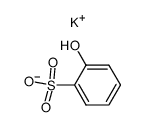 CAS#:87376-18-9
CAS#:87376-18-9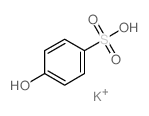 CAS#:30145-40-5
CAS#:30145-40-5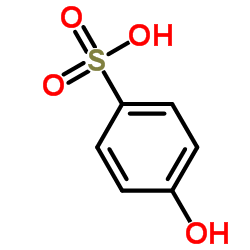 CAS#:98-67-9
CAS#:98-67-9 CAS#:7446-11-9
CAS#:7446-11-9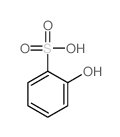 CAS#:609-46-1
CAS#:609-46-1 CAS#:5930-44-9
CAS#:5930-44-9 CAS#:7732-18-5
CAS#:7732-18-5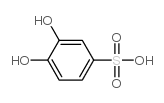 CAS#:7134-09-0
CAS#:7134-09-0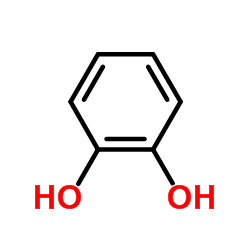 CAS#:120-80-9
CAS#:120-80-9 CAS#:99-50-3
CAS#:99-50-3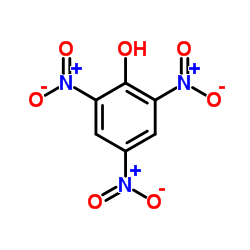 CAS#:88-89-1
CAS#:88-89-1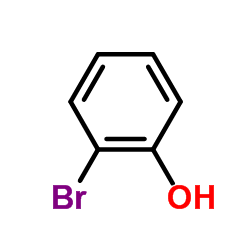 CAS#:95-56-7
CAS#:95-56-7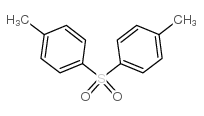 CAS#:599-66-6
CAS#:599-66-6